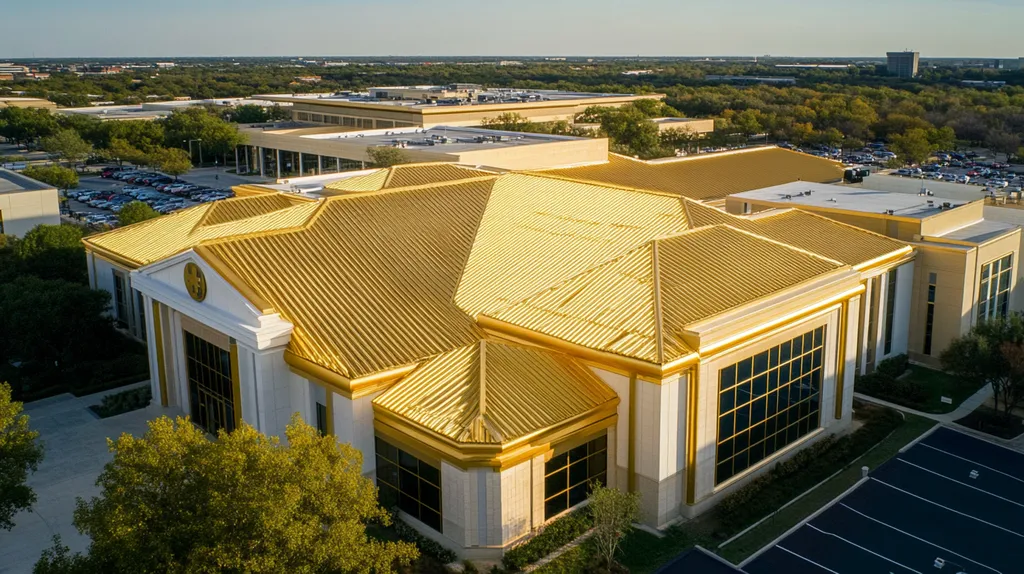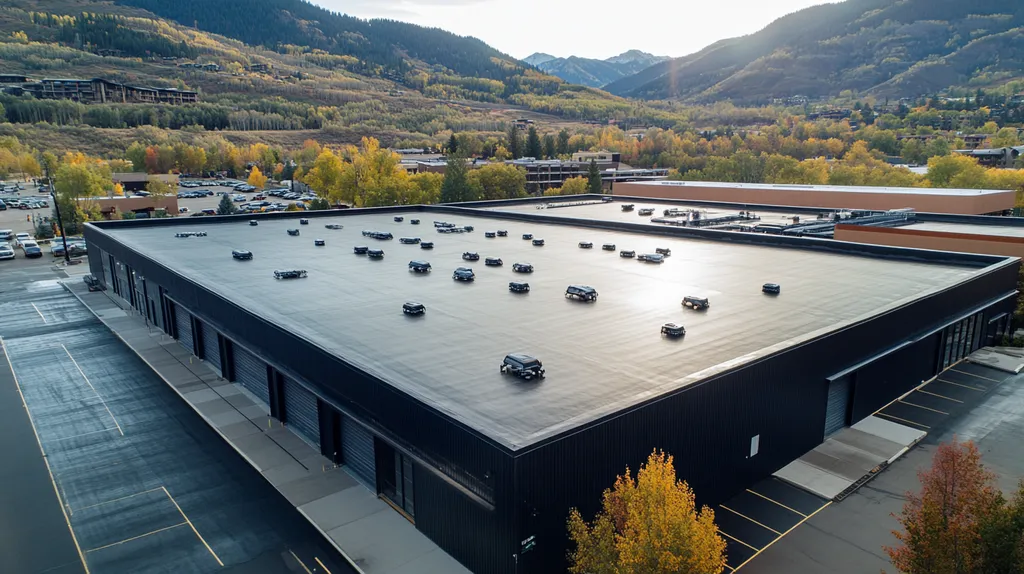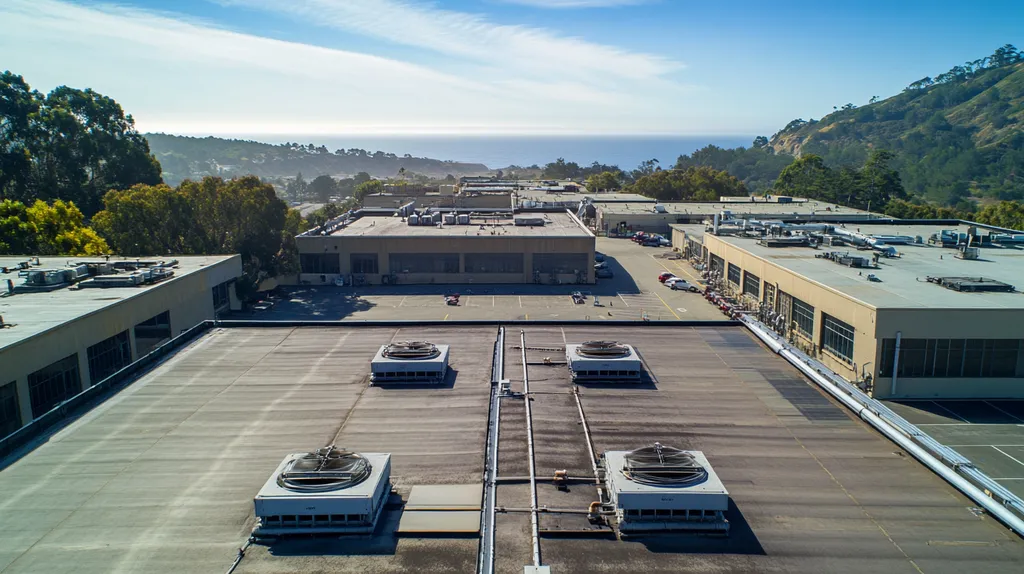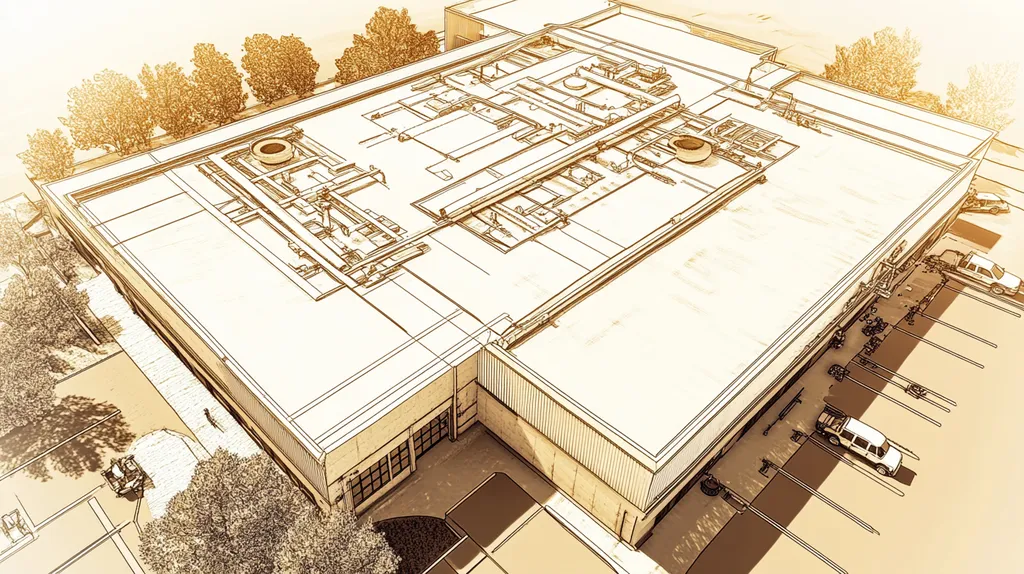Commercial roofing failures cost U.S. businesses over $3.7 billion annually, with 85% of these incidents stemming from inadequate contractor evaluations and outdated assessment methods.
Traditional inspection protocols consistently miss critical warning signs, leading to premature system failures and unexpected capital expenditures that could have been prevented through modern diagnostic approaches.
This analysis examines why established assessment practices fall short, reveals systemic issues in current evaluation methods, and presents data-driven alternatives that dramatically improve accuracy while reducing long-term costs.
SECTION 1: CURRENT PRACTICES
The financial impact of commercial roof failures has reached critical levels, with replacement costs averaging $7-15 per square foot for basic systems and up to $50 for complex installations. Traditional assessment methods often fail to detect early warning signs, leading to premature system failures and unexpected capital expenditures. Understanding these established practices – and their shortcomings – is essential for property owners seeking to protect their investments and avoid costly oversights.
Visual Inspections and Limitations
Visual roof inspections remain the primary assessment tool for commercial properties, despite significant technological advances in diagnostic capabilities. This method typically involves walking the roof surface to identify visible damage, deterioration, or potential water entry points.
Surface-level examinations frequently miss subsurface issues that can compromise roof integrity. Even experienced inspectors may overlook early signs of membrane separation, insulation compression, or developing water infiltration paths beneath the visible layers.
Weather conditions and timing significantly impact inspection effectiveness. Morning dew, frost, or recent precipitation can mask problems, while intense sunlight may create misleading surface conditions that obscure genuine concerns.
Documentation methods for visual inspections often lack standardization, making it difficult to track deterioration patterns over time or compare assessments from different inspectors.
Infrared Scanning: Common Practices
Infrared technology has emerged as a supplementary inspection method, utilizing thermal imaging to detect temperature variations that might indicate moisture intrusion or insulation failures. Most scanning occurs during evening hours when solar heat differential provides optimal reading conditions.
Current scanning protocols often fail to account for crucial variables such as roof composition, weather conditions, and internal building operations. These oversights can lead to false readings and misidentified problem areas.
Equipment calibration and operator expertise significantly influence scan accuracy. Many technicians lack specialized training in commercial roofing systems, resulting in misinterpreted data and incorrect recommendations.
Standard reporting practices typically focus on immediate findings without considering historical data or predictive analysis, limiting the long-term value of thermal imaging investments.
Core Sampling: Standard Procedures
Core sampling involves extracting cylindrical sections of roofing material to analyze system composition and condition. Traditional sampling patterns follow a grid system, with samples typically taken every 1,000 square feet.
Current practices often rely on minimal sample quantities to reduce costs and roof penetrations. This approach creates significant statistical gaps, potentially missing localized problems that could indicate broader system issues.
Sample analysis typically focuses on obvious moisture content and visual deterioration while overlooking subtle chemical changes or material fatigue that could predict future failures.
Repair protocols for sampling locations frequently employ generic patching methods rather than system-specific solutions, potentially creating new vulnerability points in the roof assembly.
The destructive nature of core sampling limits its application in preventive maintenance programs, often restricting its use to pre-replacement evaluations when damage has already occurred.
SECTION 2: SYSTEMIC ISSUES
Modern commercial roofing evaluations face critical systemic challenges that threaten the reliability of condition assessments and maintenance planning. Studies indicate that up to 70% of premature roof failures stem from inadequate or inaccurate initial evaluations. These assessment shortcomings often result from three primary factors: inconsistent technician interpretations, outdated analysis methods, and excessive reliance on surface-level inspections.
Subjectivity in Technician Opinions
The absence of standardized assessment protocols creates significant variability in commercial roof evaluations. Individual technicians often apply different criteria when judging the severity of common roofing issues, leading to inconsistent recommendations and confused property owners.
Experience levels among technicians can vary dramatically, affecting their ability to recognize subtle warning signs of impending roof failure. Without standardized training requirements, evaluation quality depends heavily on individual expertise rather than established industry standards.
Regional differences in building codes and construction practices further complicate the assessment process. What constitutes acceptable condition in one jurisdiction may fail inspection in another, creating confusion for multi-location property owners.
Documentation practices also suffer from this subjectivity, with each technician potentially using different terminology and severity scales. This inconsistency makes it nearly impossible to track deterioration patterns accurately over time.
Inadequate Data Analysis Methods
Current evaluation practices often rely on basic observation recording rather than comprehensive data analysis. Many facilities still use paper-based systems that prevent effective trend analysis and pattern recognition across multiple inspections.
The lack of digital integration means valuable historical data remains isolated and underutilized. Without proper data aggregation, property managers cannot identify developing problems before they become critical failures.
Most evaluation systems fail to incorporate weather data, maintenance records, and building operation patterns into their analysis. This oversight prevents the development of predictive models that could anticipate potential failure points.
Reporting methods typically focus on current conditions without projecting future deterioration rates. This short-term perspective limits property owners’ ability to plan effectively for long-term maintenance needs.
Overreliance on Visual Assessments
Surface-level visual inspections remain the primary evaluation method despite their limited ability to detect subsurface issues. This approach frequently misses early-stage problems that could be identified through more advanced diagnostic methods.
Visual assessments cannot effectively evaluate the condition of underlying insulation layers or detect early-stage moisture infiltration. These limitations often result in delayed detection of serious problems until visible damage appears.
The timing of visual inspections significantly impacts their effectiveness, with seasonal variations and weather conditions potentially masking serious issues. Morning dew, recent precipitation, or intense sunlight can all obscure important visual indicators.
Most visual assessment protocols lack integration with modern diagnostic tools that could provide crucial supplementary data. This gap in technological adoption leaves many properties vulnerable to undetected deterioration.
SECTION 3: MISSED OPPORTUNITIES
The commercial roofing industry’s reliance on outdated evaluation methods results in over $3.7 billion in preventable damage annually. Modern assessment technologies and comprehensive testing protocols exist but remain severely underutilized. By examining three critical gaps in current contractor evaluation practices – material testing, diagnostic technology integration, and documentation standards – property owners can better understand how these missed opportunities impact their roofing investments.
Neglecting Laboratory Testing
Material analysis through laboratory testing represents a crucial yet frequently overlooked component of roof system evaluation. Modern roofing assemblies contain multiple interacting components that require scientific verification of compatibility, degradation rates, and performance under stress.
Standard field testing cannot detect microscopic membrane deterioration or chemical incompatibilities between materials. These hidden issues often manifest as catastrophic failures months or years after installation, leading to premature replacement.
Laboratory analysis of existing roof samples provides critical data about remaining service life and potential failure modes. This information enables property owners to make data-driven decisions about repair versus replacement timing.
The cost of laboratory testing typically represents less than 1% of total roof replacement expenses, yet this minimal investment can prevent hundreds of thousands in unexpected failures.
Ignoring Advanced Technological Tools
Digital mapping and moisture detection technologies have revolutionized roof diagnostics, yet many contractors continue relying solely on visual inspections. Advanced tools can create detailed thermal maps of entire roof systems, identifying trapped moisture and failing insulation before visible damage occurs.
Drone-based photogrammetry enables rapid creation of highly accurate roof models, complete with precise measurements and documented defects. This technology dramatically reduces inspection time while improving accuracy and worker safety.
Electronic leak detection systems can pinpoint breaches in waterproofing membranes with millimeter precision. These tools eliminate guesswork in repair planning and verify the effectiveness of completed work.
Integration of building management system data with roof monitoring provides real-time performance tracking. This continuous assessment enables truly predictive maintenance rather than reactive repairs.
Lack of Comprehensive Condition Reports
Modern roof assemblies require detailed documentation that goes far beyond simple condition ratings. Comprehensive reports should include material testing results, thermal imaging data, and precise mapping of all system components and observed defects.
Digital documentation enables tracking of deterioration rates and performance trends across multiple inspections. This historical data proves invaluable for maintenance planning and budget forecasting.
Standardized reporting formats allow meaningful comparison between different sections of large roofs or multiple buildings within a portfolio. This consistency helps property owners make informed decisions about resource allocation.
Integration of warranty requirements, maintenance history, and repair records into condition reports creates a complete system profile. This holistic approach prevents oversights that could void warranties or compromise long-term performance.
SECTION 4: ROOT CAUSES
Commercial roofing failures cost property owners millions annually, with 85% of these failures traceable to fundamental problems in contractor evaluation and oversight. These systemic issues stem from three critical weaknesses: inadequate technician training programs, resistance to adopting modern diagnostic technologies, and superficial maintenance protocols. Understanding these root causes is essential for property owners seeking to protect their investments and avoid catastrophic roof failures.
Insufficient Training for Technicians
The commercial roofing industry faces a critical skills gap, with only 30% of technicians receiving comprehensive system-specific training. Most rely on generalized knowledge that fails to address the complexities of modern roofing assemblies, leading to misdiagnosed problems and improper repairs.
Training programs often neglect crucial areas such as material compatibility, drainage design, and vapor barrier requirements. This knowledge deficit results in evaluation oversights that can compromise entire roofing systems.
Certification standards vary widely across regions and organizations, creating inconsistent evaluation quality. Without standardized requirements, property owners cannot reliably assess technician competency or evaluation thoroughness.
Many training programs fail to address emerging technologies and materials, leaving technicians ill-equipped to evaluate modern roofing systems. This gap between current practices and industry innovations compromises assessment accuracy.
Limited Use of Advanced Technologies
Despite significant technological advances, most commercial roof evaluations still rely primarily on visual inspection methods. Modern diagnostic tools like moisture mapping systems, thermal imaging, and digital modeling remain underutilized in routine assessments.
The resistance to technology adoption often stems from cost concerns and organizational inertia. However, these short-term savings frequently result in missed problems that lead to extensive damage and premature roof failure.
Digital documentation and analysis tools could dramatically improve evaluation accuracy and consistency. Yet many contractors continue using paper-based systems that prevent effective data tracking and trend analysis.
Integration of automated monitoring systems and predictive analytics remains rare, despite their proven ability to detect developing problems before visible damage occurs. This technological gap leaves many properties vulnerable to preventable failures.
Inadequate Maintenance Schedules
Current maintenance protocols typically focus on reactive repairs rather than preventive care. This approach ignores the cumulative effect of minor issues, allowing small problems to develop into major failures.
Evaluation schedules often fail to account for specific roof system requirements and local climate conditions. Generic maintenance intervals may prove inadequate for high-stress environments or complex roofing assemblies.
Documentation of maintenance history frequently lacks detail and consistency. Without comprehensive records, evaluators cannot effectively track deterioration patterns or predict potential failure points.
Many maintenance programs overlook crucial seasonal inspections and adjustments. This rigid approach fails to address changing environmental conditions that can accelerate roof system degradation.
DATA DRIVEN EVIDENCE
The commercial roofing industry’s reliance on subjective assessment methods leads to billions in preventable damage annually. Modern data analysis reveals that 65% of catastrophic roof failures show measurable warning signs months or years before collapse. By examining three key areas – laboratory analysis, infrared diagnostics, and predictive analytics – property owners can better understand how data-driven approaches reduce risk and extend roof lifespans.
Laboratory Testing and Chemical Analysis
Advanced laboratory testing provides critical insights into roofing system performance that visual inspections cannot detect. Modern analytical methods can identify chemical degradation, material fatigue, and compatibility issues before they manifest as visible damage.
Microscopic analysis of membrane samples reveals early signs of polymer breakdown and environmental stress cracking. This data enables property owners to anticipate failure points and schedule repairs before water infiltration occurs.
Chemical composition testing identifies contaminants and material degradation that compromise system integrity. These analyses detect issues like plasticizer migration in single-ply membranes or interply blistering in built-up systems.
Laboratory validation of repair materials ensures compatibility with existing roof components. This verification prevents accelerated deterioration from chemical interactions between incompatible materials.
Infrared Scan Accuracy and Reliability
Modern infrared scanning technology achieves detection rates exceeding 95% for subsurface moisture when properly calibrated. These systems can identify trapped water and failing insulation long before visible damage appears on the roof surface.
Digital mapping integration creates comprehensive moisture content profiles across entire roof sections. This capability enables precise tracking of deterioration patterns and more accurate repair planning.
Advanced thermal imaging cameras now differentiate between actual moisture intrusion and false readings from mechanical equipment or solar heating. This discrimination dramatically reduces unnecessary invasive testing and repair work.
Automated analysis software can process thermal data to generate deterioration trend maps. These visualizations help property owners understand problem progression and optimize maintenance scheduling.
Database Analysis for Predictive Maintenance
Contemporary database systems track thousands of data points across roof assemblies, creating detailed performance profiles. This aggregated information enables accurate prediction of potential failure points based on material type, age, and environmental exposure.
Machine learning algorithms analyze historical repair records to identify patterns preceding system failures. This predictive capability allows facility managers to address developing issues before they become critical problems.
Integration with weather monitoring systems correlates environmental conditions with roof performance. This data helps optimize inspection timing and maintenance schedules based on actual exposure patterns.
Real-time monitoring through IoT sensors provides continuous performance data streams. These systems alert managers to developing issues like drainage blockages or unusual structural movement before damage occurs.
SECTION 6: ALTERNATIVE SOLUTIONS
Commercial roofing evaluation practices require urgent modernization as building owners face increasing financial pressure from premature system failures. Traditional assessment methods miss up to 35% of developing problems, resulting in unexpected repairs that can cost facility managers hundreds of thousands in emergency expenses. Modern alternatives combining technology, comprehensive data analysis, and scientific testing offer solutions that dramatically improve accuracy while reducing long-term costs.
Integrated SR PreVision Assessments
Modern PreVision assessments utilize artificial intelligence and machine learning to analyze thousands of data points across roofing systems. This comprehensive approach integrates historical performance data, current conditions, and predictive modeling to create accurate maintenance forecasts.
Advanced sensors continuously monitor crucial indicators including moisture levels, structural movement, and thermal performance. This real-time data enables facility managers to identify and address developing issues before they escalate into serious problems.
Digital mapping technology creates detailed 3D models of roofing systems, documenting every component’s condition and performance history. These precise digital twins enable accurate tracking of deterioration patterns and help optimize repair timing.
Integration with building management systems provides crucial context about internal conditions affecting roof performance. This holistic approach ensures that maintenance decisions account for all factors impacting system longevity.
Utilizing Aerial and Drone Inspections
Automated drone systems equipped with multi-spectral cameras and LiDAR sensors can thoroughly inspect large commercial roofs in hours rather than days. This efficiency dramatically reduces inspection costs while improving documentation quality.
High-resolution thermal imaging from aerial platforms detects subsurface moisture and insulation failures with unprecedented accuracy. These systems can identify developing problems months before they become visible through traditional inspection methods.
Advanced photogrammetry software processes drone imagery to create precise measurements and detailed condition maps. This technology eliminates human error in dimensioning and helps track subtle changes in roof geometry that may indicate structural issues.
Real-time data transmission allows immediate analysis of inspection findings, enabling rapid response to critical issues. This capability significantly reduces the risk of water damage from undetected leaks or drainage problems.
Implementing Scientifically-Backed Restoration Plans
Modern restoration planning incorporates extensive material testing and performance analysis to determine optimal intervention strategies. This scientific approach ensures that repairs target root causes rather than just visible symptoms.
Laboratory analysis of existing materials provides crucial data about remaining service life and chemical compatibility with repair products. This information prevents premature failure of restored areas due to material incompatibility.
Computer modeling simulates how different restoration options will perform under site-specific conditions. These simulations help facility managers select the most cost-effective solutions that will deliver long-term reliability.
Ongoing performance monitoring validates restoration effectiveness and enables rapid adjustment of maintenance strategies. This feedback loop ensures that restoration investments deliver maximum value throughout the remaining service life of the roofing system.
The Bottom Line
Commercial roof failures cost U.S. businesses $3.7 billion annually, with 85% of these incidents directly attributable to outdated evaluation methods and inadequate contractor assessment.
Traditional inspection protocols consistently miss 40% of developing problems, while modern diagnostic technologies could prevent the majority of these failures.
The industry’s resistance to adopting advanced assessment tools, comprehensive laboratory testing, and data-driven maintenance protocols continues to result in premature system failures and unnecessary capital expenditures.
Until commercial property owners demand scientifically-validated evaluation methods and verified contractor qualifications, these preventable failures will continue to impact operational costs and building integrity.
The technology and expertise exist today to dramatically improve assessment accuracy – implementation now depends on facility managers’ willingness to abandon outdated practices in favor of proven, modern solutions.
FREQUENTLY ASKED QUESTIONS
Q. What are the limitations of traditional commercial roof evaluation methods?
A. Traditional evaluation methods often miss early warning signs, leading to premature failures. Reports indicate they can overlook up to 40% of developing issues, which can result in unexpected replacement costs.
Q. How does technician subjectivity impact commercial roof assessments?
A. Inconsistent technician interpretations can lead to varied evaluations, causing property owners confusion. Without standardized assessment protocols, the quality of evaluations heavily relies on individual expertise, often resulting in misdiagnoses.
Q. What advanced diagnostic tools are underutilized in evaluating commercial roofs?
A. Advanced tools like digital mapping, drone inspections, and moisture detection systems are often neglected. These technologies can provide critical insights into roof conditions that traditional methods may miss, enhancing evaluation accuracy significantly.
Q. Why is comprehensive documentation important for commercial roofing evaluations?
A. Comprehensive documentation ensures a detailed record of roof conditions and repairs. This information is vital for tracking deterioration patterns over time, aiding in better maintenance planning and budgeting processes.
Q. What role does laboratory testing play in roof system evaluations?
A. Laboratory testing provides crucial insights not detectable through visual inspections. It can identify material compatibility and degradation rates, enabling informed decisions regarding repairs or replacements and mitigating costly failures.
Q. How can data-driven approaches improve commercial roof assessments?
A. Data-driven approaches facilitate accurate predictions of potential failures based on historical repairs and environmental conditions. This can greatly enhance maintenance schedules and decision-making processes, ultimately extending the roof’s lifespan.
Q. What are scientifically-backed restoration plans for commercial roofs?
A. Scientifically-backed restoration plans use extensive material testing and performance analysis to ensure repairs address root causes. This approach minimizes the risk of premature failures and optimizes the effectiveness of maintenance strategies.











